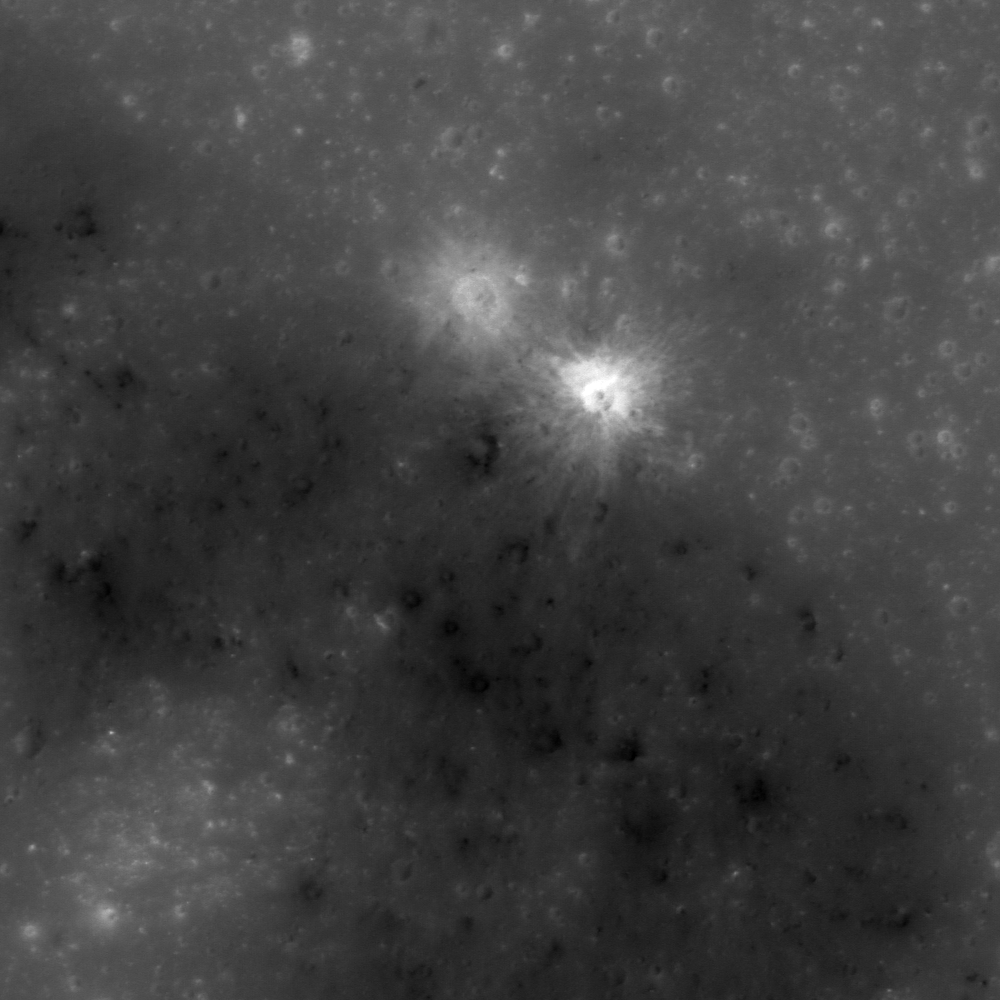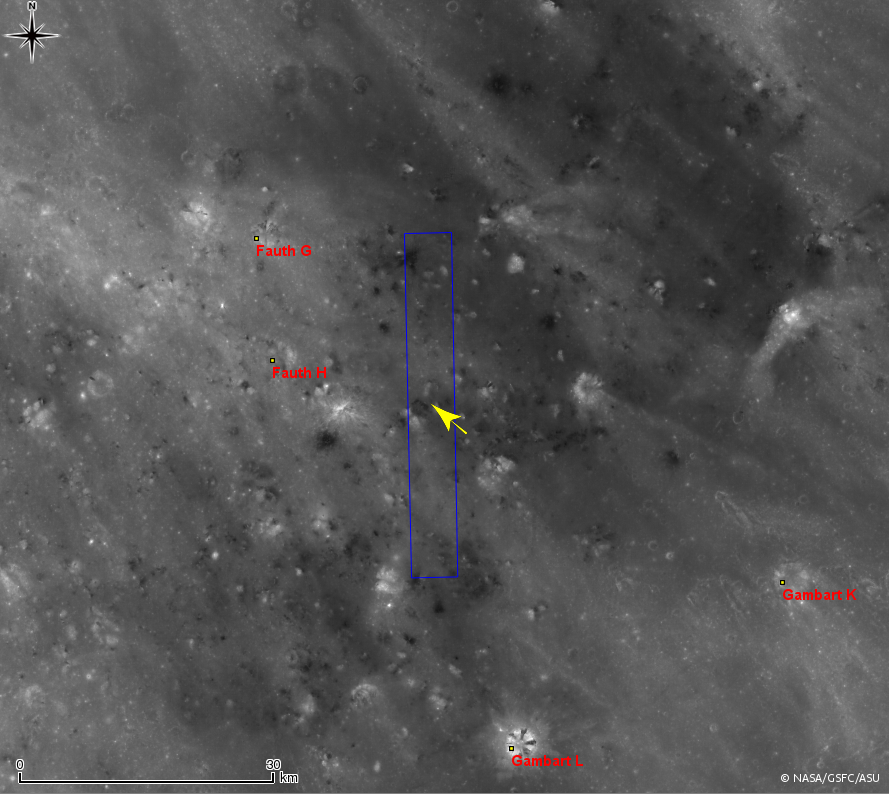
Dark Mantle Deposits (DMDs) are diffuse deposits with a very low albedo, which are the remnants of pyroclastic eruptions. Sinus Aestuum is a DMD near Copernicus crater. Today's Featured Image is a portion of one of the lowest-reflectance areas in this DMD (see next WAC context image), about 150 km southeast from Copernicus.
In the opening image, the lowest-reflectance materials are located at the rims and the ejecta of the multiple small craters (< 20 m in diameter), indicating that these dark materials are in the shallow subsurface. On the other hand, the two craters near the middle of this image display relatively high reflectance materials and do not expose any dark deposits from beneath the surface. That means that the lateral extent of these low-reflectance pyroclastic materials is somewhat discontinuous. Looking at the ejecta blankets of craters within lunar DMDs is one of the best ways to estimate the extent and thickness of lunar pyroclastic deposits. In the case of regional DMDs like Sinus Aestuum, the pyroclastic glasses that comprise these deposits represent one of the most accessible lunar resources that could be used by future human explorers to enable extended lunar surface operations.
Explore the DMDs at Sinus Aestuum in full NAC frame yourself!
Related posts:
Pyroclastic Trails, Pyroclastics and Vent, Hyginus Crater and Pyroclastics, Pyroclastic Excavation, Rima Bode: Constellation region of interest
Published by Hiroyuki Sato on 20 February 2013
